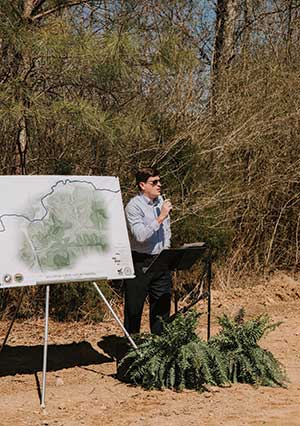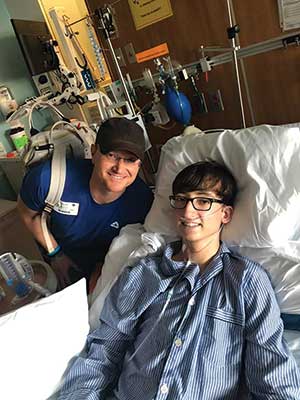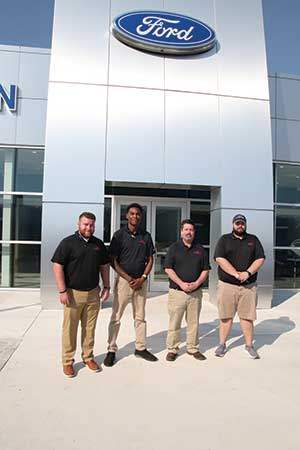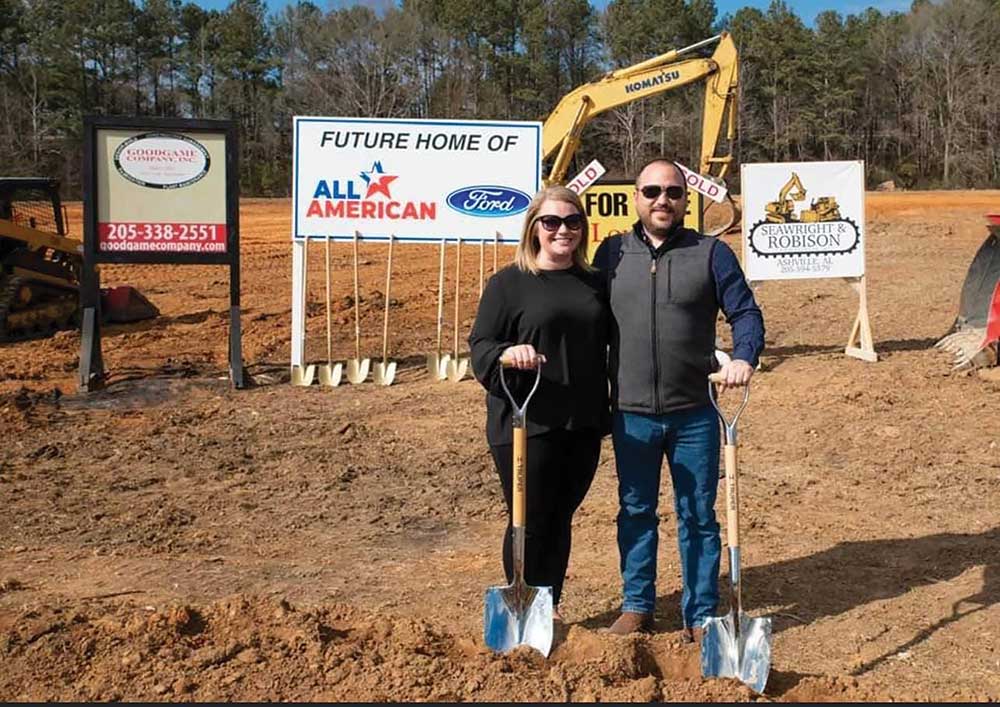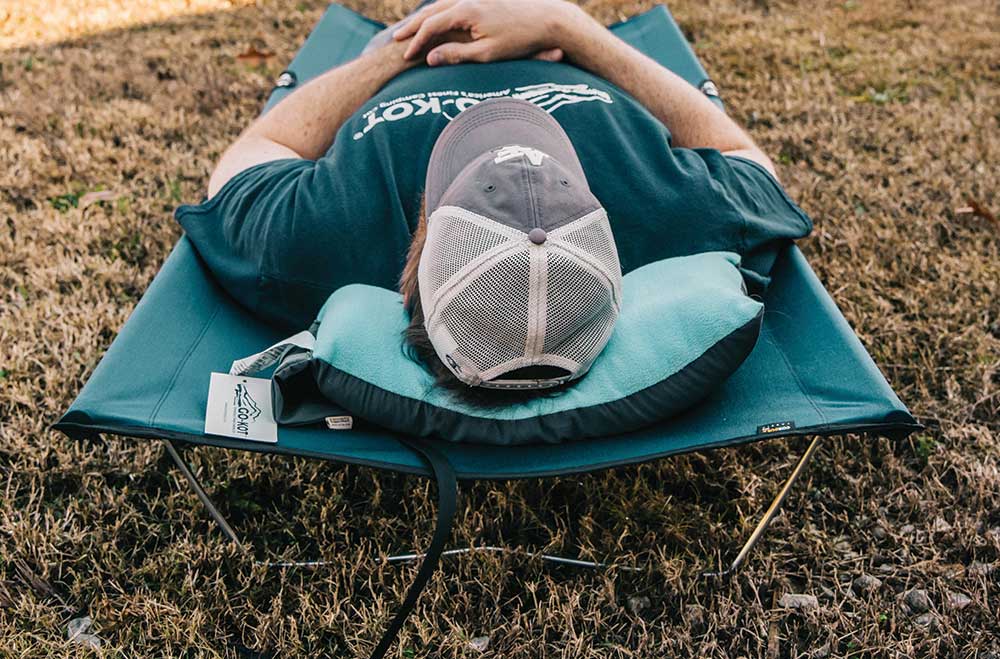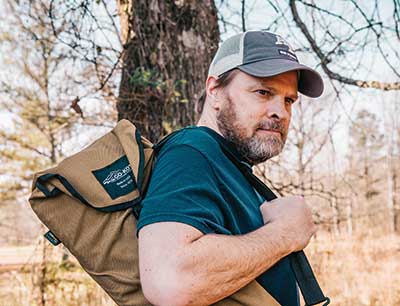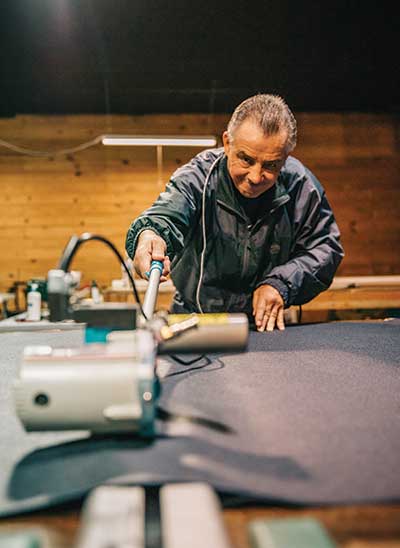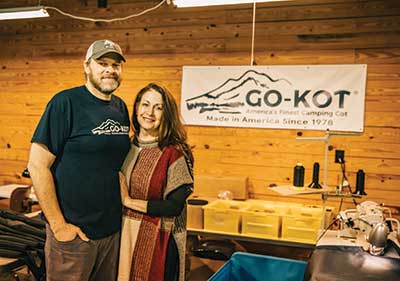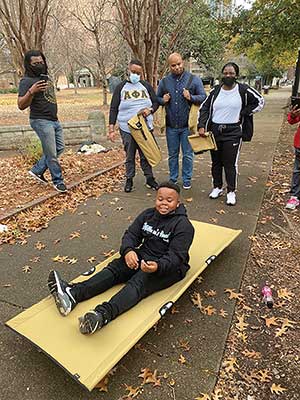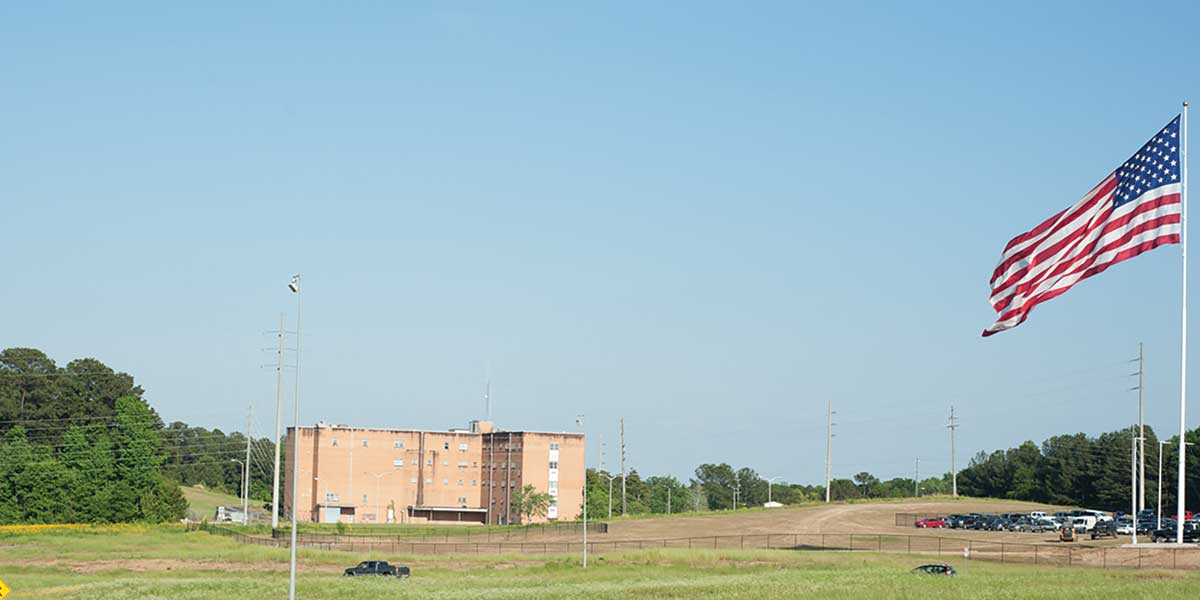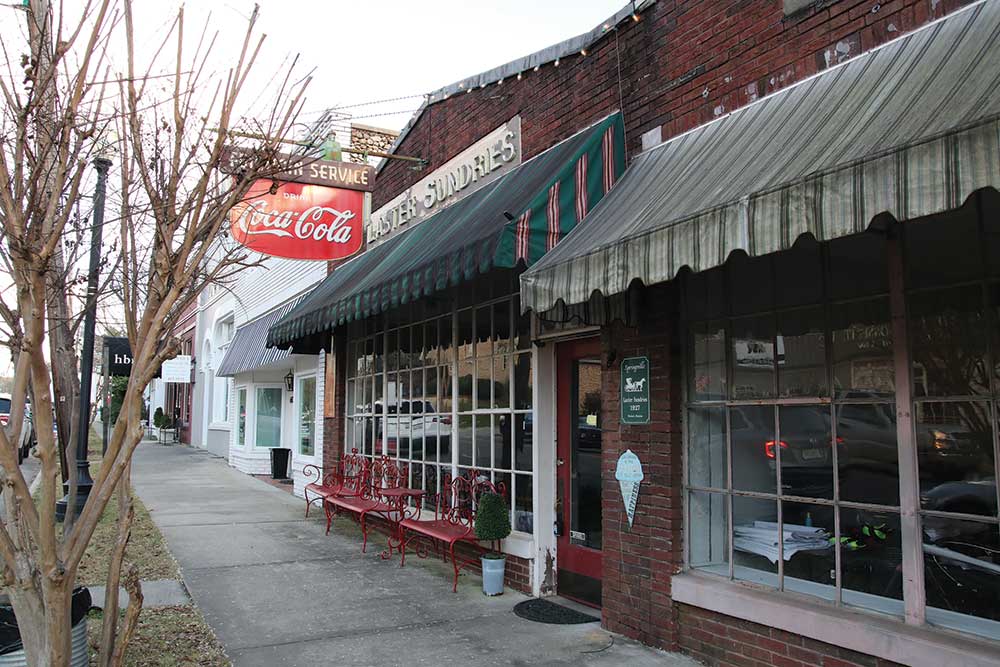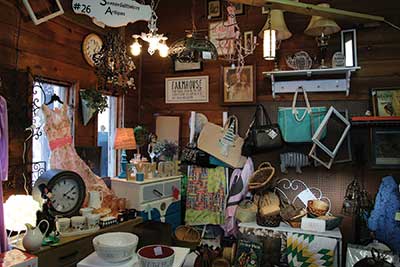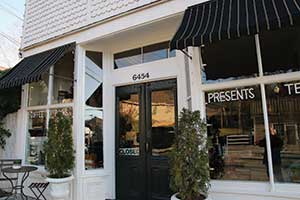Long-awaited groundbreaking celebrates 422-acre nature preserve in Springville
Story by Carol Pappas
Photos by Mackenzie Free
Discover Archive
and submitted Photos
When public officials hoist shovels full of dirt into the air, it traditionally celebrates the coming of a new business or industry. But when officials struck that familiar pose for the cameras in March, it signaled the coming of a new era for St. Clair County.
On a ridge surrounded by dense forest above Big Canoe Creek in Springville, a crowd gathered in a clearing to celebrate the groundbreaking for Big Canoe Creek Nature Preserve – 422 acres of nature –preserved, protected and treasured.
Now designated as a Forever Wild site in Alabama, this preserve protects the pristine creek that runs through it, allowing its rare species to thrive. It preserves its flora and fauna. And it is being designed so that all can enjoy now and for generations to come.
“In 1999, the St. Clair Economic Development Council was formed to recruit projects that would create jobs and improve the quality of life” in St. Clair County, said EDC Executive Director Don Smith. “This doesn’t normally fit with what we usually do,” but it does not stray from its mission to improve the quality of life. “People will be able to hike and enjoy nature with their friends, family and children.”
Early day
Go back a bit – 2009, to be precise – and the idea of Forever Wild came to the attention of Doug Morrison, who was president of Friends of Big Canoe Creek at the time, and Vicki Wheeler, who holds that title now. “It took nine years to make it happen, but it happened,” Morrison said.
“Friends of Big Canoe Creek brought to the attention of our community the importance of protecting Big Canoe Creek – its channel, its banks and its forested flood plain – that led to the creation of Big Canoe Nature Preserve,” Wheeler said. “For it to be designated as a ‘preserve’ was rewarding for us because it spoke to the importance of the ongoing protection of the natural aesthetic and ecological properties of the land and the creek and, by extension, the entire watershed.”
She noted that “As a member of the Alabama Rivers Alliance, Friends of Big Canoe Creek wanted to ensure that the preserve would be an example for other watershed protection groups in the state to follow, a model for ecological preservation and restoration and environmental stewardship. It also would serve as an educational resource for the community, to teach that ‘Through Nature Comes Understanding.’”
Team work
They had help along the way. Wendy Jackson, then executive director of Alabama Freshwater Land Trust pitched the idea to then Springville Mayor Butch Isley, who embraced it. Springville Mayor Dave Thomas got behind the project and enhanced it through the push for creating Big Canoe Creek Preserve Partners, a nonprofit that will help with sustainable funding. Morrison chairs that nonprofit.
“We will have funding for outdoor education, new trails and endless opportunities,” Morrison said. He noted that Alabama ranks fourth nationally in biodiversity, but No. 1 in species like fish, salamanders, snails, mussels, crayfish and turtles, all of which are found in Big Canoe Creek. “There are so many discoveries to be made. It’s here in our own backyard. We are going to bring people to nature.”
Former Alabama Commissioner of Conservation and Natural Resources Barnett Lawley was a driving force behind the Forever Wild push along with Jackson. While their positions were lofty on the state level – Lawley as a cabinet member for former Gov. Bob Riley, and Jackson, as a leader in acquiring lands that enhance water quality and preserve open spaces, this project was personal to them, too. Their roots are firmly planted in St. Clair County soil as native born – Lawley in Pell City and Jackson in Ashville.
Dean Goforth, a Springville businessman who owns nearby Homestead Hollow, and Candice Hill, an executive with St. Clair EDC, entered the picture to push the project along, and “things got off the ground,” Morrison said.
In 2018, it became a site in the Forever Wild program, which funds the acquisition of land to preserve what the name implies. St. Clair County and City of Springville have joined forces behind the project along with EDC, and investment to date is $1.5 million.
Patti McCurdy, director of Alabama State Lands Division of the Department of Conservation and Natural Resources, called the unprecedented show of support locally an example she holds up to other communities across the state working toward similar goals. “You deserve a true pat on the back,” she said.
About the preserve
A visit to the preserve area is like discovering a long-hidden treasure. Preserve officials call the Big Canoe Creek watershed “a jewel in the crown of Alabama’s biodiversity.” And rightly so.
According to the preserve’s own description, “About 80% of the main stem remains free-flowing through its 50-plus-mile length, as do all four of its major tributaries. Both the main stem and tributaries throughout the watershed retain much of their forest cover, helping maintain critical natural water temperatures. And to a significant degree, the watershed’s high quality is attributable to its drainage area remaining essentially rural and agricultural in character and land use.”
The creek is home to more than 50 species of fish, including the rare Trispot Darter, which was discovered in 2008 in Little Canoe Creek. The Trispot Darter is a species that used to be found in Alabama but had not been seen in nearly 50 years. It is now listed by the U.S. Fish and Wildlife Service under the Endangered Species Act.
Mussels, nature’s own water filter, are in “great supply” in Big Canoe Creek, which has retained most of its species, and has kept the creek pristine. Officials note that they are most endangered because of the need for extremely high water quality.
“Mussels are one of the most imperiled animal groups in North America, and their presence in the Big Canoe Creek watershed is a testament to its ecological integrity,” according to the preserve. “Big Canoe Creek has eight federally listed freshwater mussel species, and an 18-mile stretch of its main stem was designated in 2004 as a ‘critical habitat’ under the Endangered Species Act.”
A brand-new species, The Canoe Creek Clubshell (Pleurobema athearni), is only found in Big Canoe Creek and has been discovered in one of its tributaries.
The preserve’s 422 acres includes hilly, forested terrain as well as the creek, and its northern border is about a mile long with the northwestern corner spanning both sides of the creek.
Creekside scenery is abundant and higher points of the preserve provide views of the Big Canoe Creek watershed, including picturesque Canoe Creek Valley and the ridges of Pine and Blount mountains.
Realizing the vision
The groundbreaking ceremony celebrated the beginning of the foundational aspects of the preserve property. It includes improvements to the entrance road and the initiation of its first hiking trail designed by Flow Motion Trail Builders through a contract with the City of Springville. Once completed, the goal is to have a series of trails that will eventually cross the preserve.
Other activities anticipated to eventually become part of the preserve’s offerings include horseback riding, kayaking and hiking.
“The Big Canoe Creek Nature Preserve is a project that we are all behind here in Springville,” said Mayor Thomas. “Giving the public a place to experience the beauty of this area, increase their knowledge about nature, exercise and spend time in the quietness of the outdoors is something this entire administration has a desire to do.”
He noted that previous administrations began this project, “and we plan to see it through. We look forward to welcoming those in the surrounding communities as they visit Springville to enjoy this beautiful area at the heart of our community.”
Perseverance pays off
Lawley, by virtue of his cabinet post, was chairman of Forever Wild. “This is what Forever Wild is for,” he said. These properties are “an asset for the community and provide free opportunities for citizens to utilize property that is theirs. It’s taxpayer property.”
This project took longer than most because of the land acquisition delays in dealing with landowners. “But everybody stayed committed to it. It was a great team,” he said. “You can’t give enough credit to Doug Morrison. He hung in there, was tenacious and kept people motivated.”
He noted that the program around the state has great potential, pointing to other Forever Wild properties that communities can take advantage of and have a real impact on their economy. “They see major increases in their tax base,” Lawley said.
Springville, he added, will reap sizable benefits because it gives the city the opportunity to “create its own economic impact.” Similar properties without as many amenities as Big Canoe Creek draw hundreds of thousands of people each year. “This is going to be a destination point.”
Jackson sees the potential as well. Through her work at Freshwater Land Trust, she was heavily involved in the early stages. “I have had the honor of being involved with land conservation here in Alabama and across the country. This project in my home county, is an excellent example of how to do successful conservation. Over the years, the project traversed multiple political administrations who all stayed the course. The leadership shown by the City of Springville and the St. Clair County Commission is amazing as are the public-private partnerships” with the Big Canoe Creek Preserve Partners, Freshwater Land Trust and Community Foundation of Greater Birmingham.
“It is a testament to what I have always known and that is the beauty of the people who call this amazing place home and how special our natural areas are,” she said. “This is why, no matter how far I travel, my home will always be here with some of the finest people in the world. I really can’t emphasize how rare it is to find a lack of egos and such a collaborative nature in these projects.
“Every single person and agency made tremendous contributions, yet all of them stood at the podium giving credit to others.”
She had a name for them all – “land conservation rock stars” – but singled out one in particular. “Doug Morrison poured his heart, soul, sweat and tears in this effort. Every project needs a local person with the determination to see it through, and he is that person on this project.”
Hill sees the value in the work, too. “It is exciting to be able to offer opportunities for recreation on public properties in St. Clair County. The land itself is beautiful, and it will be preserved as greenspace in the middle of one of our fastest growing communities.”
Looking to the future, she said, “We believe that this project sets a tone for other projects yet to come. We would love to see more greenspace preserved and allow more public recreation throughout the county. All of the parties involved work together so seamlessly, and it really makes you proud to be a part. So much can be done with this type of concerted effort, and we applaud our current leadership for their role in this endeavor.”
Crossing the finish line
It took a yeoman effort from a number of corners to get the project where it needed to be to become Forever Wild. Goforth, who now serves on the Preserve Partners board, was instrumental in that process.
When he was asked by the former Springville administration to help the project along, “I didn’t fully realize the impact it would have on this city, county and the entire area.”
The pieces were there, but it needed a point person who knew their way around state agencies to put it all together. Goforth had those contacts and knew the inner workings, and he helped move it closer to fruition.
“I reached out to Candice Hill (at EDC) and others at the state level. We involved others at the county, state and city level to get it over the finish line,” he said. “I really believe it is going to become a premier destination spot in our state,” he said. “It’s going to be great for everyone. It’s not just about the economics, it’s education and preservation.”
A byproduct in opening the space is “providing a way for people to get together with family and friends and enjoy the outdoors,” he added. “It’s going to be wonderful for the local community, the county, the state and for people who travel in and out of this area.”
Smith agreed. He told the groundbreaking audience, “It’s in our nature,” coincidentally giving a nod to the county’s tourism slogan. “This kind of property would normally be in private hands with few to enjoy it. This preserve gives the public “opportunities to enjoy the outdoors and create those memories. They don’t have to drive out of state. I think they’ll like our good nature.”












